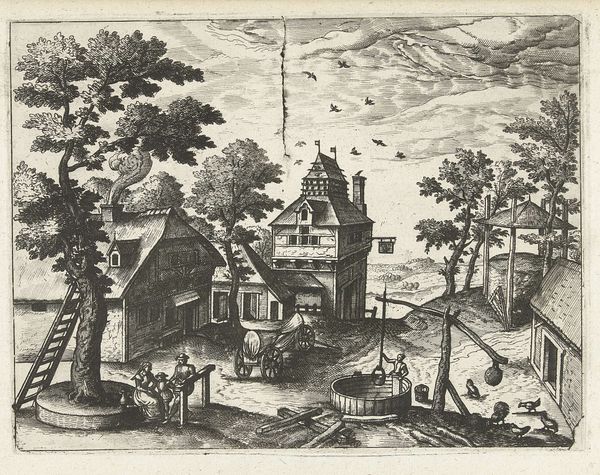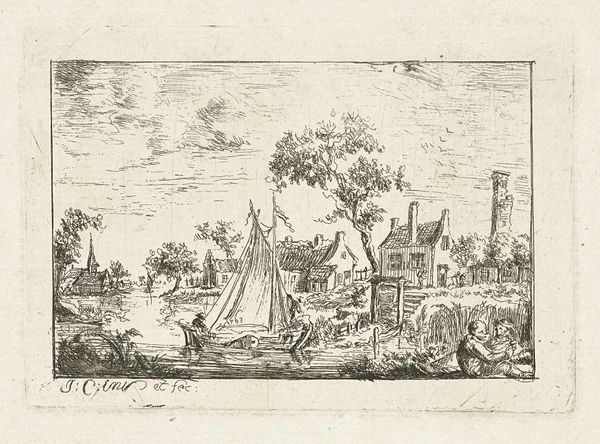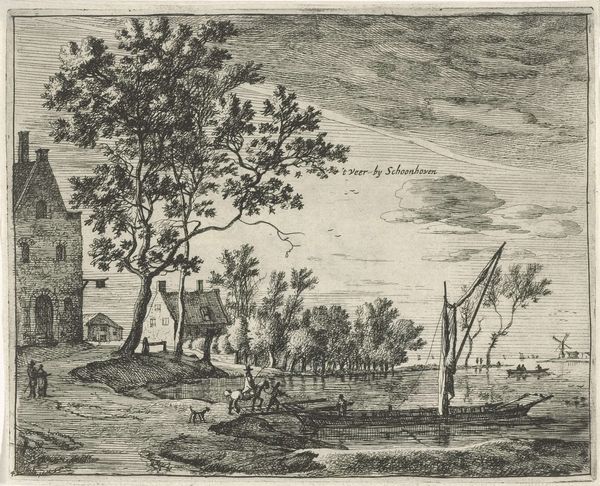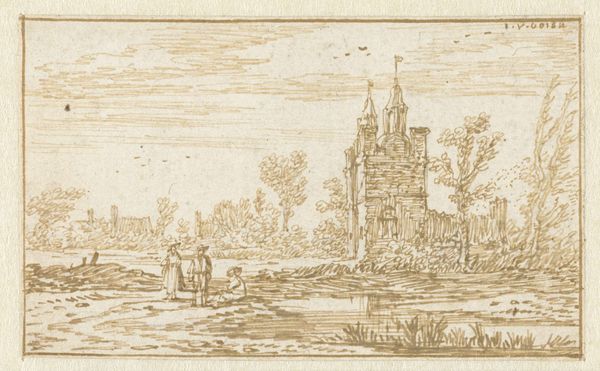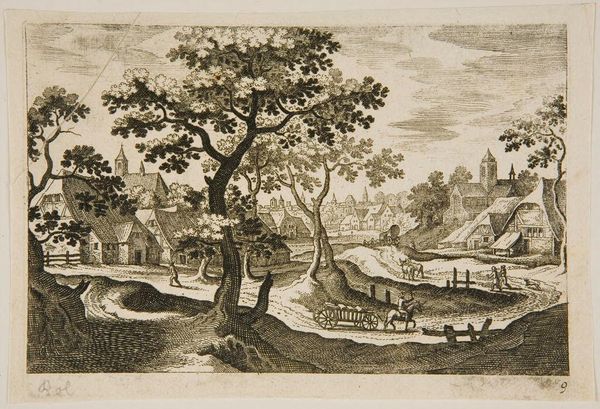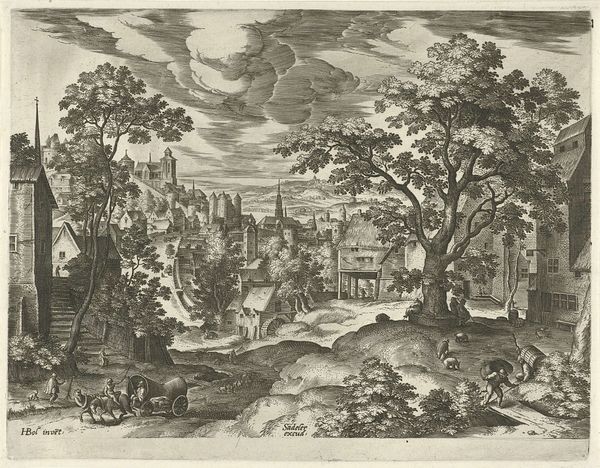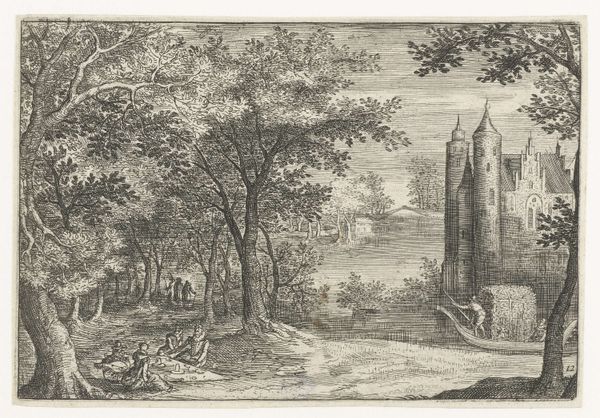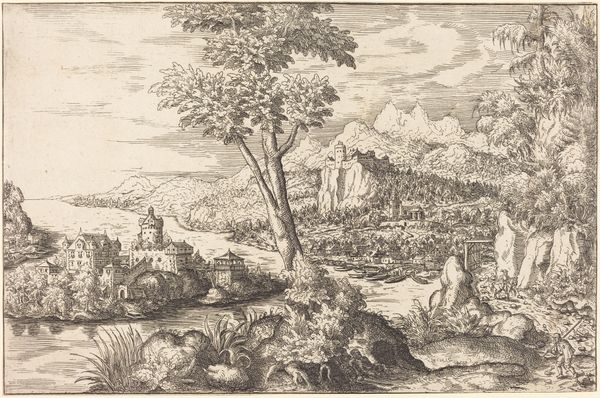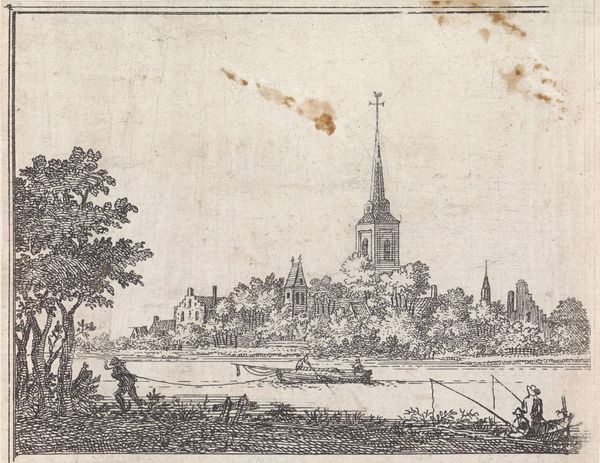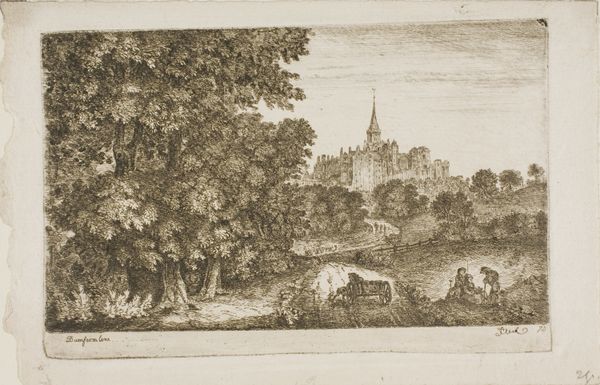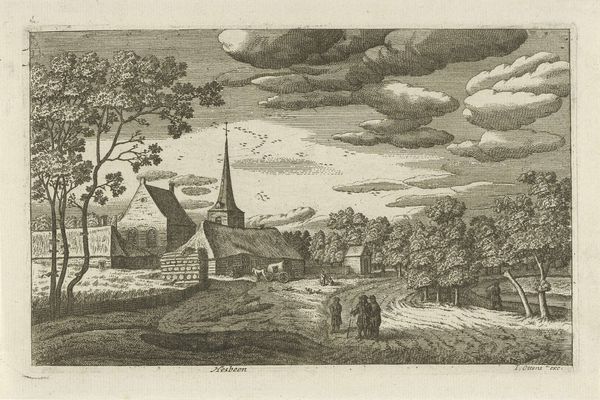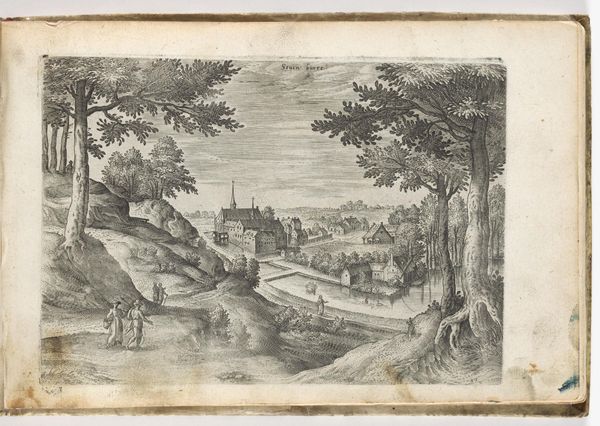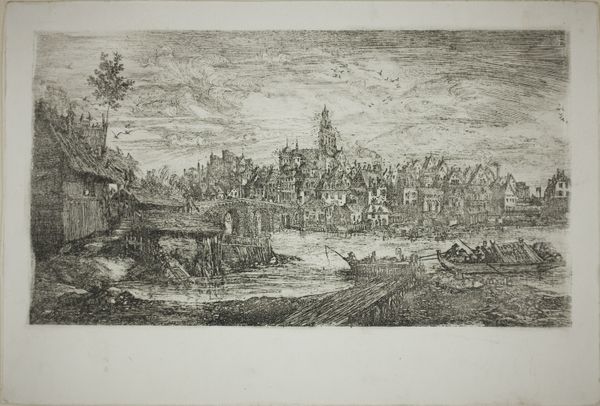
print, etching, engraving
#
dutch-golden-age
# print
#
etching
#
old engraving style
#
landscape
#
river
#
engraving
Dimensions: height 143 mm, width 210 mm
Copyright: Rijks Museum: Open Domain
Curator: Welcome. Before us is "Kasteel Weerestein," an engraving and etching by Johannes Leupenius, dating back to 1668. Editor: There's a quiet stillness to this landscape. The subtle hatching creates an ethereal, almost dreamlike quality. What catches my eye are the layered details reflecting on the water. Curator: Given its date, and its execution as a print, we see here a merging of technologies. Engraving offering detail, etching enabling softer tones, both multiplied for distribution. A commercial object as much as aesthetic. Notice also, the prominent river which highlights Dutch transport. Editor: Absolutely, the river dominates the scene, bisecting the composition while connecting the depicted buildings and their residents. Consider, though, that church spire, asserting a sense of community, faith, and even protection over this land and its people. Does the river serve not only to physically move people but to also reflect something profound about their hopes and values? Curator: Good point. I hadn’t considered that reflection could be literal and figurative here! These rivers sustained trades and merchants alike – from Amsterdam, Rotterdam, even reaching the further coasts of Europe. Printmaking made scenes like this accessible. The material circumstances – riverine geography, trade infrastructure, print production—informed the visual culture of the Golden Age. Editor: But look closer at how Leupenius rendered the castle. The castle’s symbolism could connect wealth, security and power to this area. Even the strategically placed figures in this artwork contribute meaningfully to its overarching symbolic narrative. They create focal points in what might otherwise be just a picturesque waterscape. The people and this specific area seem central. Curator: Yes, each element adds to the final outcome in which the image gets materialized and circulated, available to be bought for pennies on the market, by a middle-class citizen who lives and benefits from this trading route. Editor: I suppose we’ve both located distinct yet connected streams of understanding about this image, both feeding into the wider sea of knowledge regarding this unique period. Curator: I concur! It's interesting how exploring material context deepens appreciation for what appears to be a simple landscape view.
Comments
No comments
Be the first to comment and join the conversation on the ultimate creative platform.
